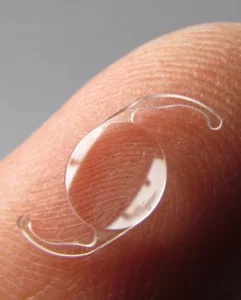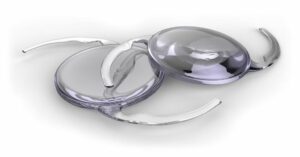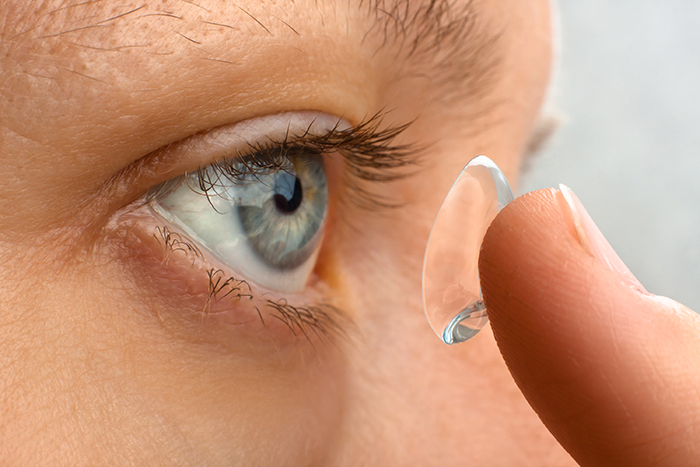Multifocal lenses are a type of lens that allows you to see clearly at all distances. They are designed for people who have difficulty seeing objects clearly both near and far. If you are considering getting multifocal lenses, or if you have just been prescribed them by your doctor, this blog post is for you! We will discuss everything you need to know about multifocal lenses, including how they work, the different types available, and the pros and cons of using them.
Contents
What Is Multifocal Lens?

Multifocal lenses, also known as progressive lenses, are eyeglass lenses that correct both near and farsighted vision. Unlike bifocals and trifocals, these lenses are designed to provide a seamless transition between the two focal points with no visible line demarcating the distance for which each lens is intended. They are the most common type of lens for people with presbyopia, an age-related eye condition that makes it difficult to focus on objects both near and far away. Multifocal lenses have been around since the 1960s and have become increasingly popular over time due to their convenience and comfort.
The Benefits of Multifocal Lenses
Multifocal lenses provide a variety of benefits to wearers. Let us discuss some of them here.
- The most obvious benefit is that multifocal lenses allow you to see near and far away objects without switching between different pairs of glasses or contacts. This eliminates the need to carry multiple pairs of eyeglasses, which can be cumbersome and inconvenient.
- Multifocal lenses also help reduce eye strain, especially when you’re trying to focus on objects that are both near and far away. This makes it easier for you to work on tasks such as reading and using a computer without straining your eyes constantly.
- Finally, multifocal lenses help give you a more natural vision. Unlike bifocals or trifocals, multifocal lenses have no visible line separating the near and far vision. This results in a more natural-looking appearance that is less noticeable to others.
Disadvantages Of Multifocal Lens
While multifocal lenses offer clear vision at multiple distances, they come with some potential drawbacks as well. Some of the most common disadvantages of multifocal lenses include:
• Reduced Sharpness Of Vision: It can be difficult for multifocal lens wearers to experience a sharp and crisp image due to the way that different refractive powers are blended together. For some, this can cause a mild decrease in overall vision sharpness.
• Poor Night Vision: One of the most commonly reported side effects of multifocal lenses is poor night vision. This is caused by glare and halos around bright lights due to the differences between how light is concentrated for near and far vision.
• Difficulty Adjusting: It can take some time for patients to adjust to wearing multifocal lenses. This is because the eyes must learn how to automatically switch between the different refractive powers within the lens.
• Cost: Multifocal lenses are generally more expensive than single-vision lenses, and insurance might not cover them entirely. Patients should check with their providers before making a decision to ensure they don’t have any unexpected costs.
By understanding the potential drawbacks of multifocal lenses, patients can make an informed decision about whether or not these lenses are right for them. However, for many people, the improved vision quality and convenience that comes from wearing multifocal lenses make them worth the investment.
Ultimately, it is important for patients to talk with their doctor about the potential risks and benefits of multifocal lenses so that they can make an informed decision about their vision care. With proper use and maintenance, these lenses can provide clear vision at multiple distances, making them a great option for many people.
Choosing the Right Multifocal Lenses

When choosing the right multifocal lenses for you, it’s important to consider factors like:
Your prescription
The type of frame: Choose a frame that is comfortable and fits properly on your face. This will ensure that you get the most out of your multifocal lenses.
The material
Multifocal lenses come in various materials, including plastic, polycarbonate, and high-index. Each material has its own benefits and drawbacks, so be sure to research the different types before making a purchase.
The cost
Multifocal lenses can be more expensive than single-vision lenses, but it’s important to bear in mind that the extra cost is worth it for the convenience and comfort they provide.
It is important to discuss your needs with your optometrist before making a purchase. They will be able to give you advice on the best type of multifocal lenses for your unique situation and ensure that they are properly fitted to your face. You should also consider the above factors when shopping for new glasses, as they will help you make the best decision for your eyes.
Multifocal lenses are a great option for people who have presbyopia or need to see both near and far away objects clearly. With the right choice of frames, materials, and prescription, these lenses can provide comfort and convenience while also giving you a more natural-looking appearance. Be sure to talk to your eye doctor about the best multifocal lenses for your needs.
How Long Does A Multifocal Lens Last?
On average, multifocal lenses can last anywhere from one to two years depending on the type of lens used. Some lower-priced lenses may require replacement within just a few months while higher quality, more durable lenses can last up to five years with proper care and maintenance. It is also important to remember that different eye conditions require different types of lenses, so make sure to discuss your particular eye needs with your optometrist before selecting a lens for you. To maximize the longevity of your multifocal lenses, it is important to protect them from scratches and excessive wear by washing them with a mild soap solution or using cleaning wipes as recommended by your optometrist. Additionally, avoid storing them in a hot or humid environment and always use the lens case provided to store them.
It is also important to remember that multifocal lenses need to be adjusted regularly in order to provide optimal vision correction. Depending on your particular eye condition, this can range from every month up to six months between visits. Make sure to discuss a regular adjustment schedule with your optometrist to ensure that you are receiving the best vision correction possible.
The benefits of multifocal lenses far outweigh any risks associated with them, making them a great choice for those who need to correct both near and distance vision. With proper care and regular visits to your optometrist, you can enjoy clear vision with your multifocal lenses for many years to come.
Conclusion
In conclusion, multifocal lens implants are an excellent option for those considering vision correction surgery. They help correct common age-related eye conditions and provide a range of vision needs that cannot be matched by traditional lenses. Before deciding on multifocal lens implants as a choice, it is important to consult with an ophthalmologist and discuss any risks or benefits associated with the procedure in order to make a well-informed decision.
Furthermore, you can also choose surgery to correct your vision or opt for contact lenses to correct a wide range of vision issues. Whichever route you choose, make sure that you’re getting the best vision care possible by researching available options and consulting with your eye doctor.
Cataract surgery is a safe and painless procedure. At MantraCare we have a team of experienced eye surgeons, who will be happy to answer your any questions on cataract surgery. Call us at +91-9711116605 for any inquiries.
